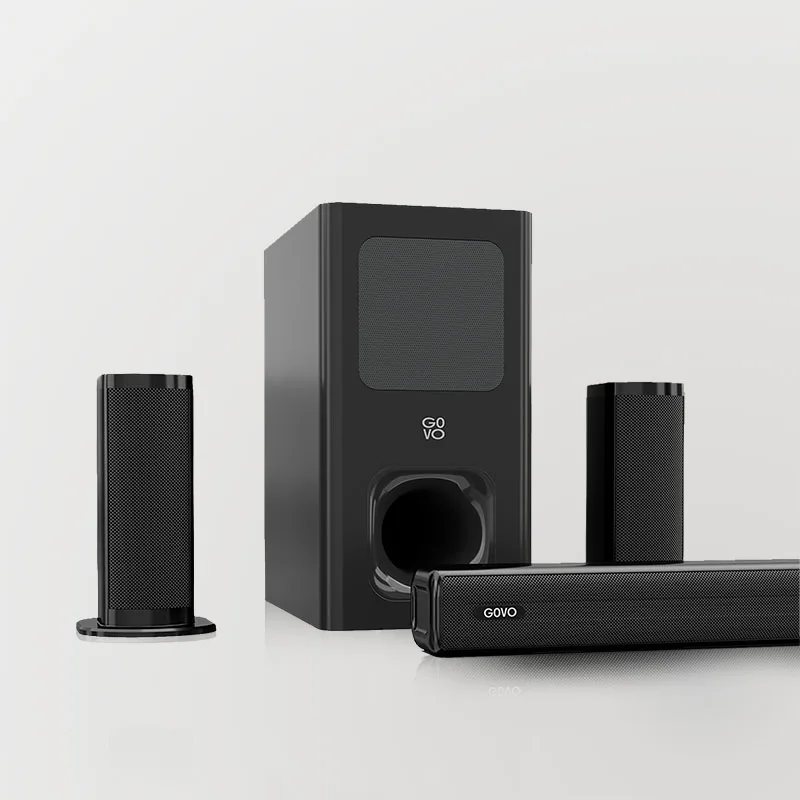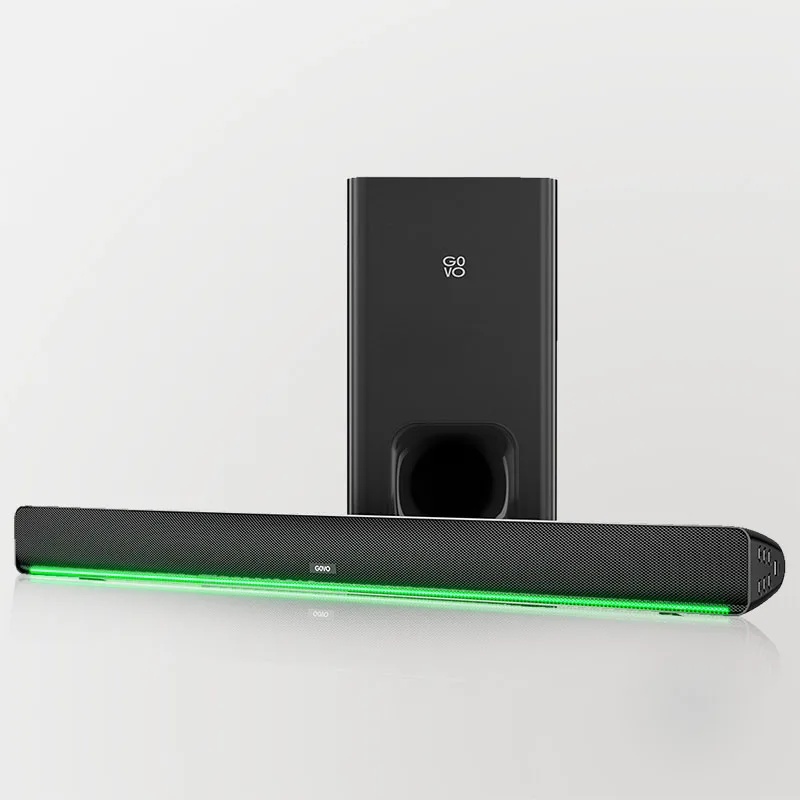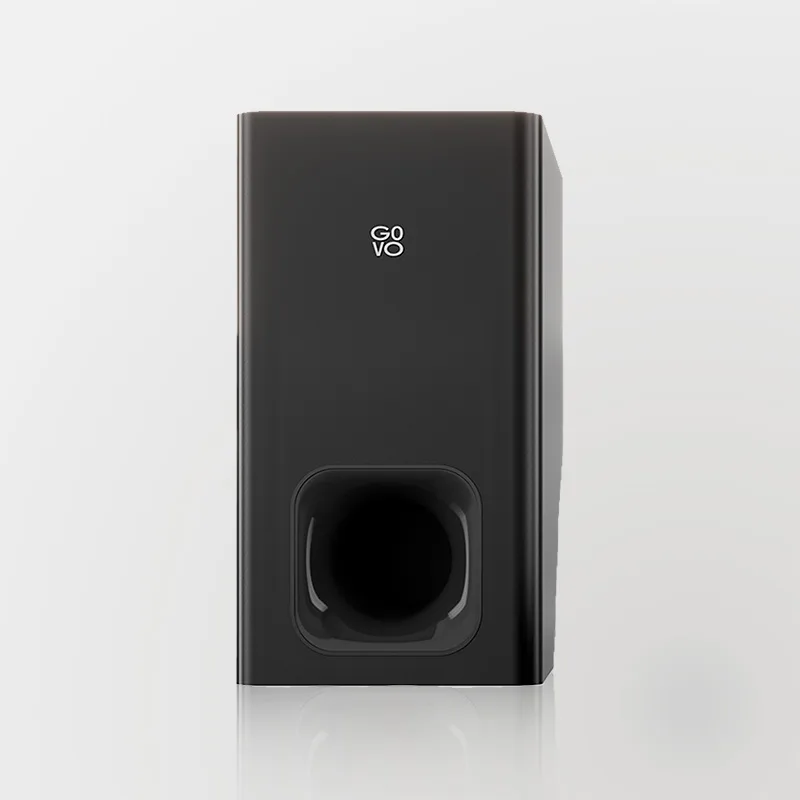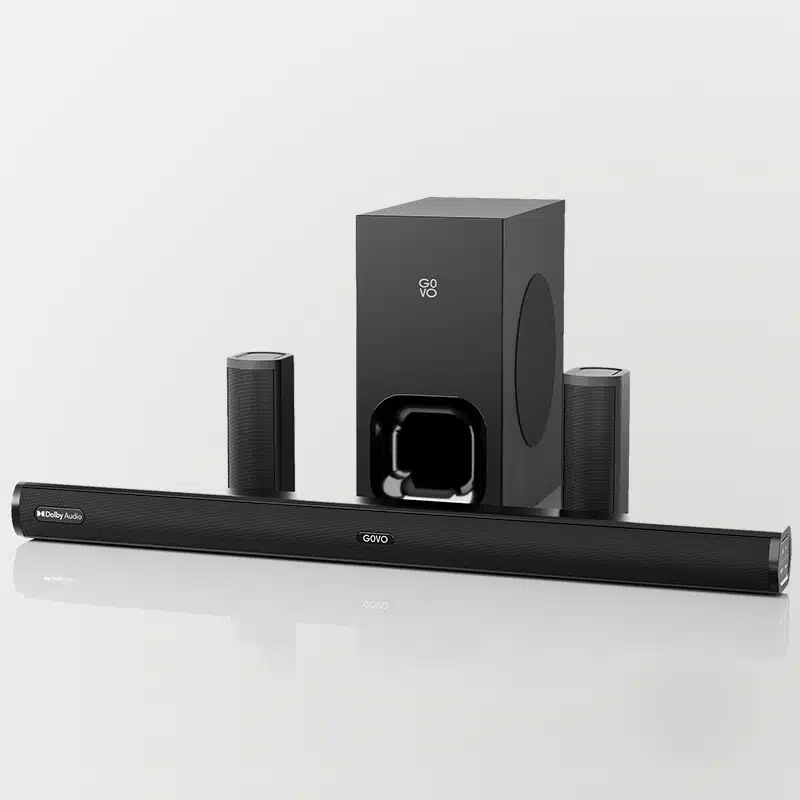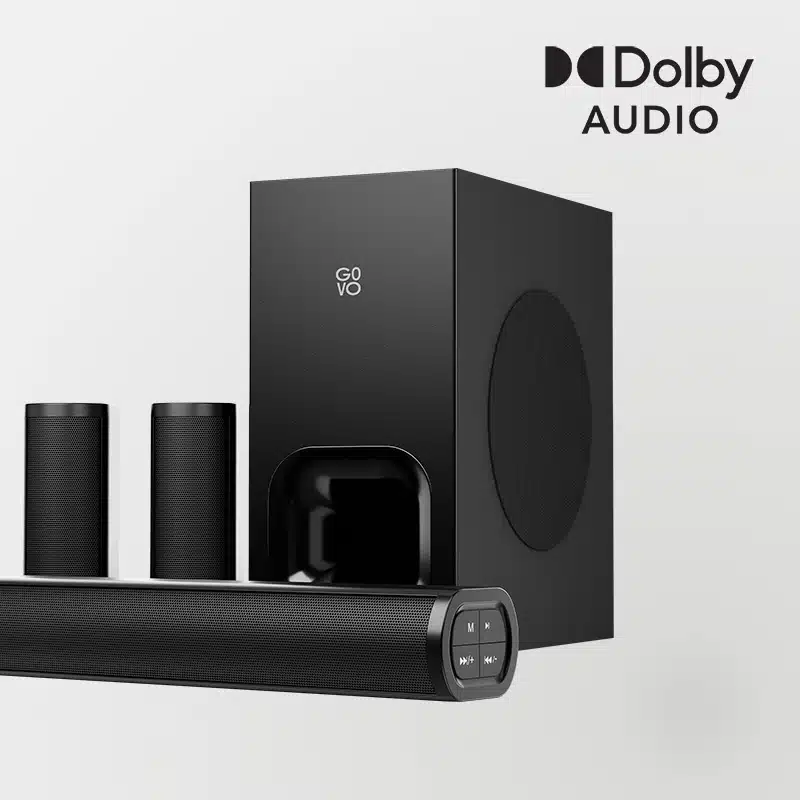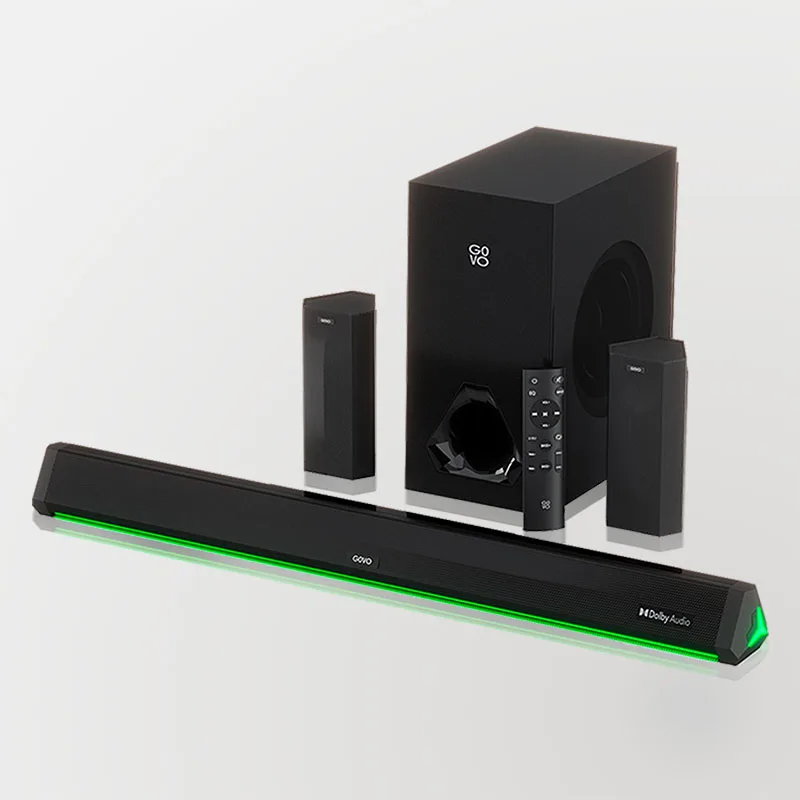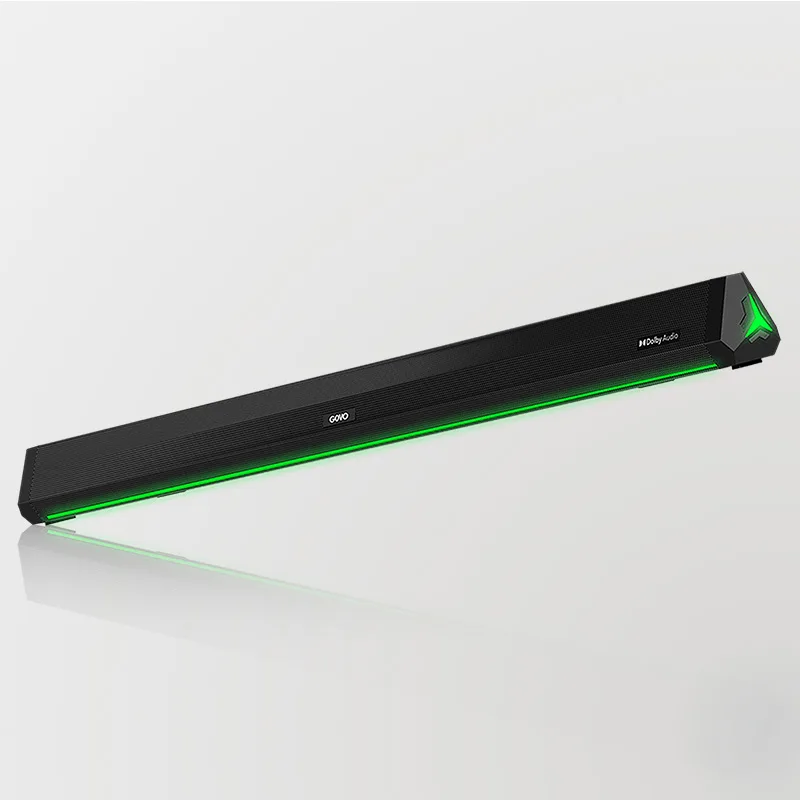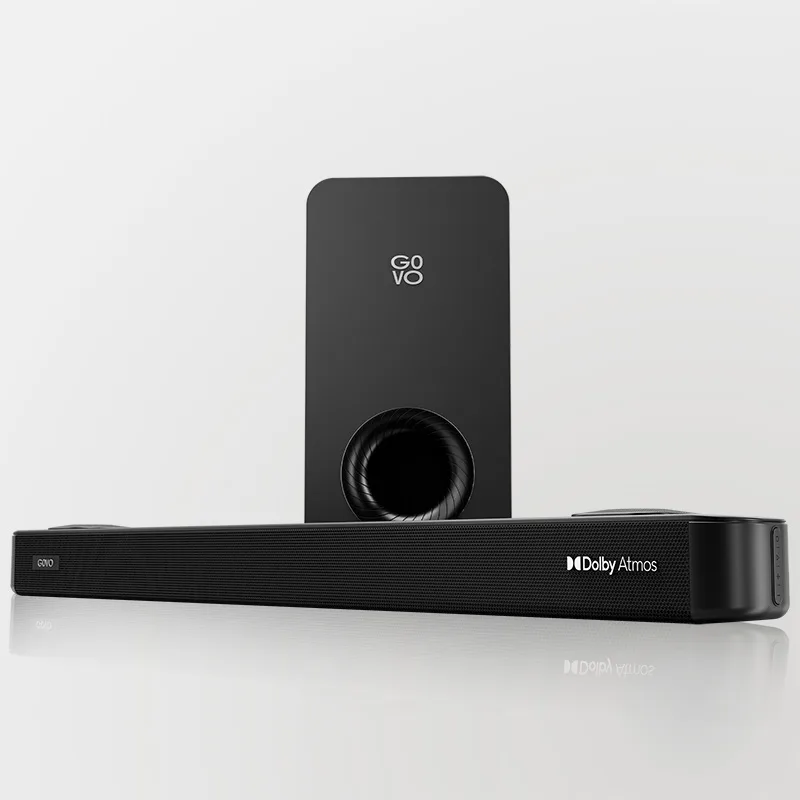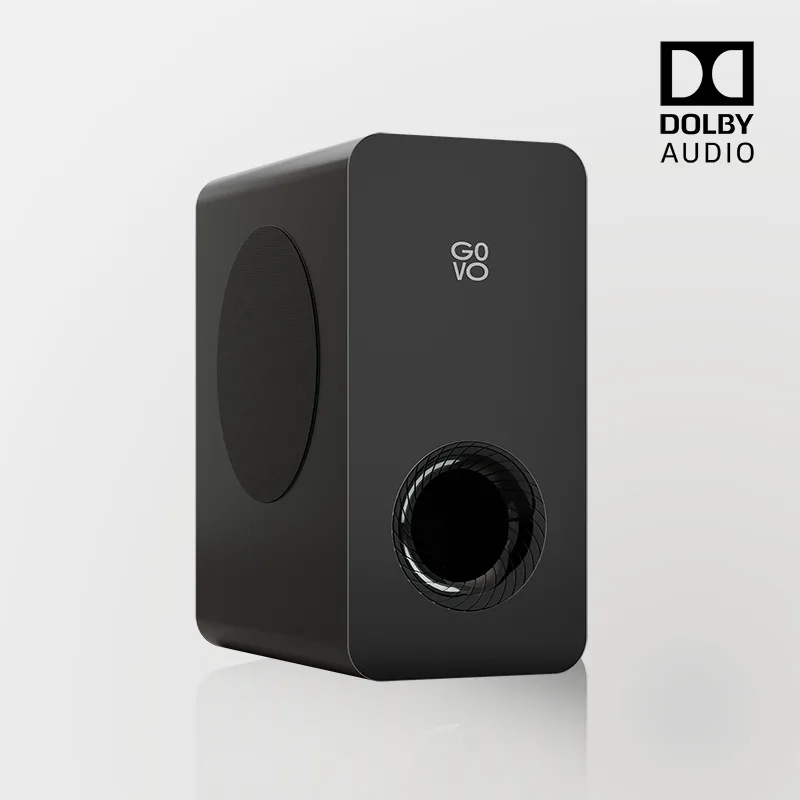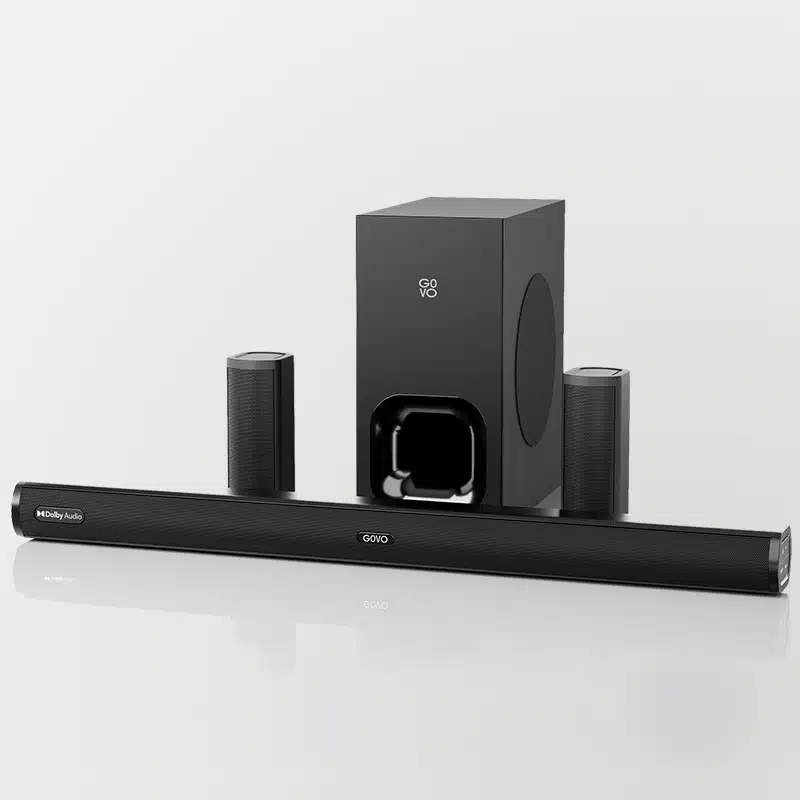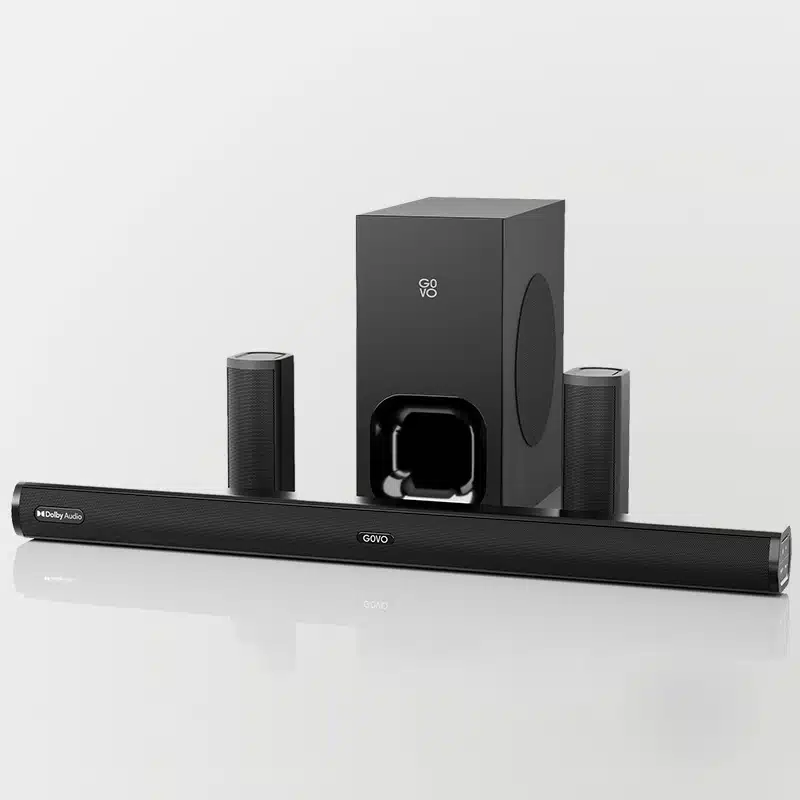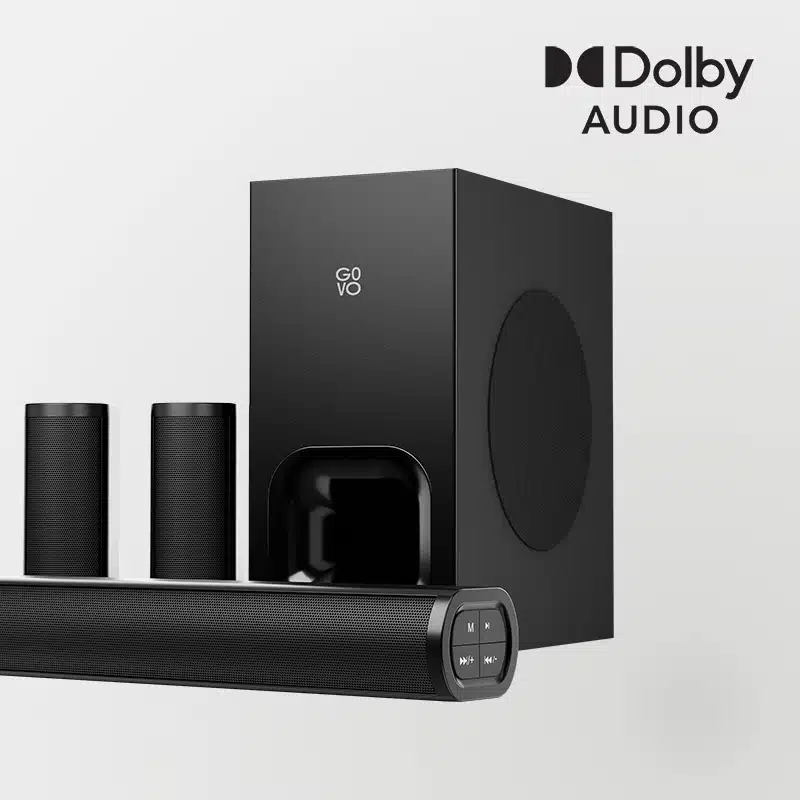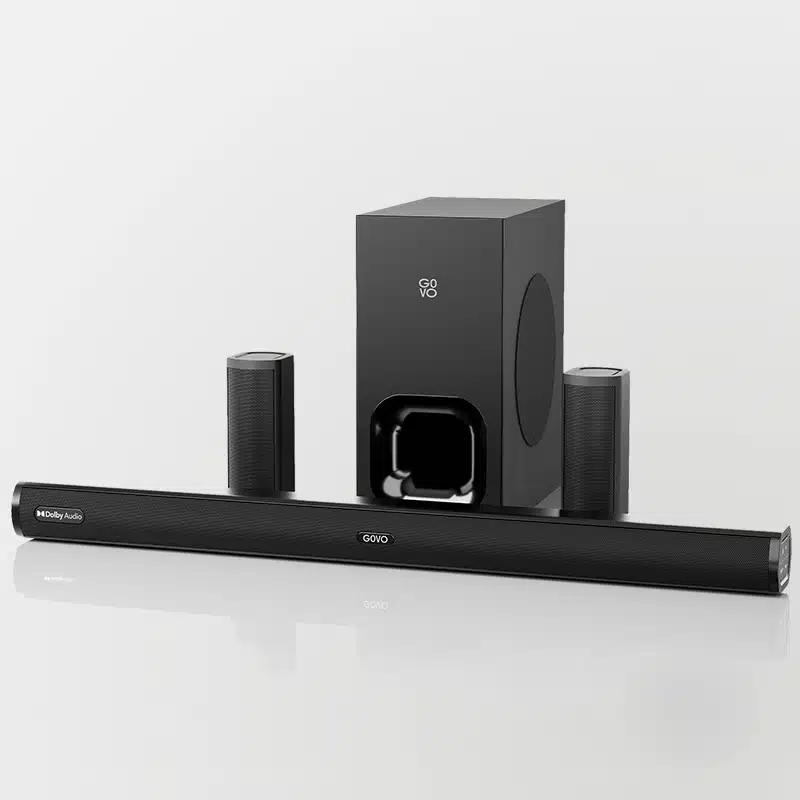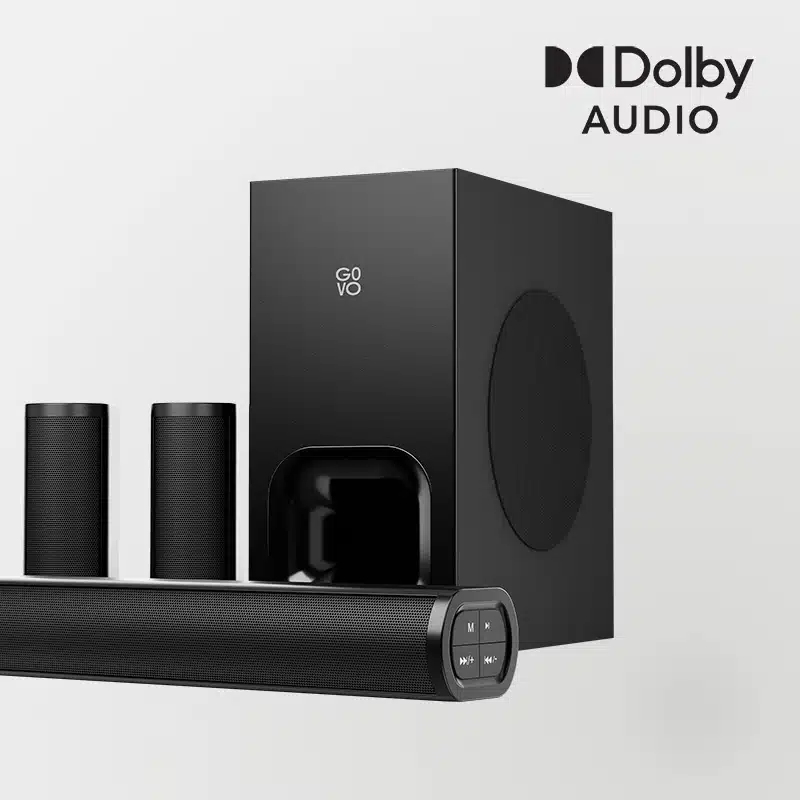Showing 16–23 of 23 results
GoSurround 955
GoSurround 960W
GoSurround 965
GoSurround 970
GoSurround 975
GoSurround 980
GoSurround 985
GoSurround 990
Frequently Asked Questions
To set up your GOVO soundbar, first, unbox it and place it in front of your TV or mount it on the wall. Connect the power cable to the soundbar and plug it into an outlet. For the audio connection, use the HDMI ARC port (preferred) by connecting an HDMI cable between the soundbar and the TV’s HDMI ARC port. Alternatively, you can use an optical cable or a 3.5mm AUX cable if your TV doesn’t support HDMI ARC. Once connected, turn on both the soundbar and TV, then adjust the TV's audio settings to output sound through the connected device. Test the sound, and use the soundbar’s remote to fine-tune settings like volume and sound modes. If the remote doesn't work, check the batteries or pairing.
Connecting your GOVO Soundbar to your TV is simple and versatile. You can choose from the following options:HDMI ARC/HDMI Cable:Connect the soundbar to the TV using the HDMI ARC port.Enable ARC settings on your TV to ensure seamless audio transmission.Optical Cable: Use the optical input for high-quality audio with minimal signal loss.Bluetooth (Wireless Connection): Pair your GOVO Soundbar with the TV through the TV’s Bluetooth settings for a cable-free setup. Enjoy crystal-clear sound with the connection option that best suits your needs.
Yes, most GOVO Soundbars are equipped with a subwoofer to deliver enhanced bass performance. Full-sized GOVO Soundbars include a separate subwoofer, designed to produce deep, powerful bass that adds richness and depth to your audio, perfect for movies, music, and gaming.However, mini soundbars feature built-in subwoofers, providing excellent bass in a compact design suitable for smaller setups. For the best sound experience, review the product details to confirm whether the soundbar includes a subwoofer or is compatible with one.
A 2.1-channel soundbar system offers basic stereo sound with enhanced bass, while a 5.1-channel system provides a more immersive surround sound experience with additional speakers for fuller audio.2.1 Channel Soundbar: This system includes two main speakers (left and right) and one subwoofer. It delivers high-quality stereo sound with added bass, making it an ideal choice for smaller spaces or users seeking a simple, cost-effective upgrade to their TV's audio quality.5.1 Channel Soundbar: This setup includes five main speakers (front left, front right, center, and two rear speakers) along with one subwoofer. It creates a full surround sound experience, offering immersive, three-dimensional audio that's perfect for larger rooms or home theater setups, enhancing both music and movie experiences.
Dolby Atmos is an advanced surround sound technology introduced in 2012, built on Dolby Digital Plus. It adds a vertical dimension to audio with object-based sound, creating a 360-degree audio experience. Atmos supports up to 128 audio tracks, offering immersive, dynamic sound that places you at the center of the action. Dolby Digital, also known as Dolby Audio, is a widely recognized standard that delivers high-quality surround sound for a great home theater experience. While Dolby Audio sets the stage with immersive sound, Dolby Atmos takes it further with its 3D, object-based audio technology.
Check if the soundbar is properly connected to the audio source and power outlet. Ensure that the volume is turned up on both the soundbar and the connected device. Verify that the input source on the soundbar matches the device you're using.
Confirm that the audio cables are securely connected. Try using different cables or ports. Check for any interference from nearby electronic devices. Adjust the equalizer settings on the soundbar to optimize the audio output.
Ensure that the remote has working batteries. Check for obstructions between the remote and the soundbar. Make sure the remote is pointed directly at the soundbars sensor. If there are still issues, consider replacing the remote or checking for firmware updates.
Yes, most soundbars support multiple input options. Check the available input ports and ensure that you've selected the correct input source using the remote or on the soundbar itself.
Confirm that the power cable is properly connected and that the power outlet is functional. Check the power button on the soundbar or the remote control. If there's still an issue, consider checking the fuse or contacting the manufacturer for further assistance.
Ensure that your soundbar is compatible with the audio output of your TV or other devices. Check for compatibility in terms of connection types (e.g., HDMI, optical, Bluetooth) and audio formats.
In most cases, yes. You can usually control basic functions directly on the soundbar itself. Check the user manual for instructions on adjusting settings without the remote.
Ensure that the Bluetooth pairing is properly set up. Check if there are any interference sources nearby. If the issue persists, try updating the soundbar firmware or reconnecting the Bluetooth device

